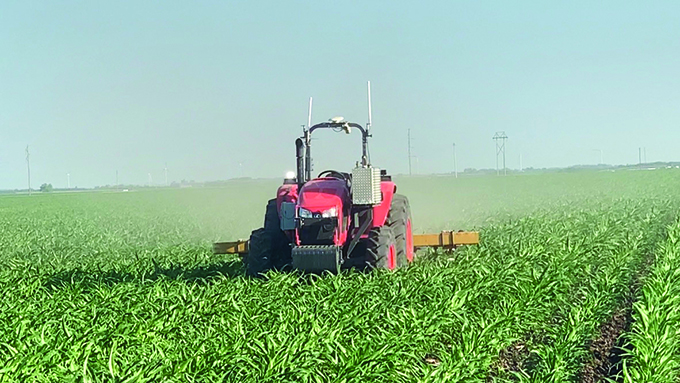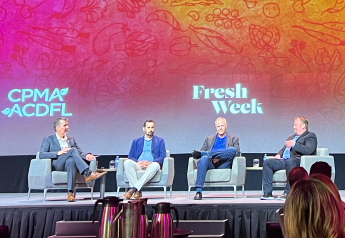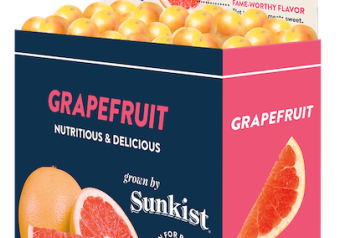Manless Machines Make Moves

Autonomy continues its steady march forward as new machines are being showcased with no one in the cab—or no cab at all. This fall saw another round of companies iterating their ideas around the concept of helping ag retailers do more with less labor.
“There’s no one defined outcome with autonomy,” says Ben Voss, director of sales at Raven.
“It’s important to get reaction, feedback and time in the field to have autonomous products that serve the real needs in agriculture.”
He adds the cost-benefit to autonomy can be very attractive with labor savings and increased productivity seen as the most upfront benefits. But, when users experience the products in the field, it helps them realize gains that weren’t obvious or anticipated.
“We will continue to invest our time to get valuable user feedback on the technology out in the field. The early autonomy customers are helping us define the future and they are a key part of setting the direction for the product.”
Case IH Trident 5550 Applies Raven Autonomy for Driverless Spreading
The Case IH Trident 5550 with Raven Autonomy is built to be a combination applicator—both liquid and dry applications—but now equipped with Raven Autonomy, the machine can also be run in either autonomous mode or manual mode.
The technology and machine marriage mean one or more driverless machines can operate in the field without an operator present in the cab. The company highlights how this can provide for greater efficiency with available labor as well as consistency in spreading application accuracy for repeatable sub-inch accuracy.
Company leaders say the autonomous spreader is a milestone in the collaboration between Case IH and Raven since CNH Industrial acquired Raven in 2021.
Here’s how the autonomous spreader works:
- Operators can plan and complete an entire field operation based on mapped field boundaries from a mobile device.
- A series of cameras and radar system enable the Raven Autonomy perception to sense the 360-degree environment around the machine.
- Artificial intelligence continuously processes a stream of images, which power Raven’s perception controller to detect obstacles.
- If an obstacle is recognized, then the machine stops safely, and the operator receives a mobile alert.
- Machine tasks and functions—fuel level, diesel exhaust fluid level, speed, revolutions per minute, bin-level status, Universal Terminal information and diagnostic trouble codes—can be reviewed on a mobile device.
Solinftec offers “Clean Field As a Service” Via Solar-Powered, Unmanned Sprayer

For the past three years, the team at Solinftec has been working on advancing its solar-powered autonomy platform, Solix. It has tested a scouting machine and is in the first year of testing a selective spraying machine.
Leo Carvalho, director of operations for Solinftec, says the company has been testing different machines with specified applications in Brazil, Canada and the U.S.
“We understand there are differences between these regions—the crops grown and the pain points for farmers,” Carvalho says. In the U.S., he says the work done so far has encouraged the team to have Solix robotics first tackle the issue of weed control. First, the company announced the Solix Scouting machine. Now, it will offer Solix Spraying.
“We want to reduce the amount of herbicide used,” he says. “To do that, we need to identify 100% of the kinds of weeds and act in the field to make spot-spray applications. We have a concept that can run constantly as long as field conditions and weather conditions are fit.”
The robot is 2.5 meters and is powered by four solar panels. The spot-spray system has been developed by Solinftec’s engineering team to provide plant-level management. Carvalho explains the Solix sprayer can cover almost 100 acres per day. With one year of testing in conjunction with Purdue University, the Solix sprayer has shown up to 70% reduction in herbicide used. As previously announced, Solinftec has partnered with Growmark to test its scouting robot. And the company recently announced a partnership with FBN to test the sprayer.
Trimble and Its Venture Group Invest in Autonomy

In late August, Trimble announced will it acquire Bilberry, a startup focused on using artificial intelligence for spot-spraying. Bilberry technology has been developed as a retrofit system for sprayers to provide green-on-green and green-on-brown spot-spray applications. Bilberry started in France in 2016 and was privately held.
Also this summer, Trimble Ventures, Trimble’s corporate venture capital fund, invested in Sabanto Inc.
Using a fleet of 60- and 90-hp tractors, Sabanto is launching its Farming as a Service concept. It has autonomously tilled, planted, seeded, weeded, applied and mowed across Illinois, Iowa, Indiana, Missouri, Nebraska, Minnesota, North Dakota, Wisconsin and Texas. For example, one of its 60-hp tractors planted more than 750 acres of corn and soybeans in one season.







